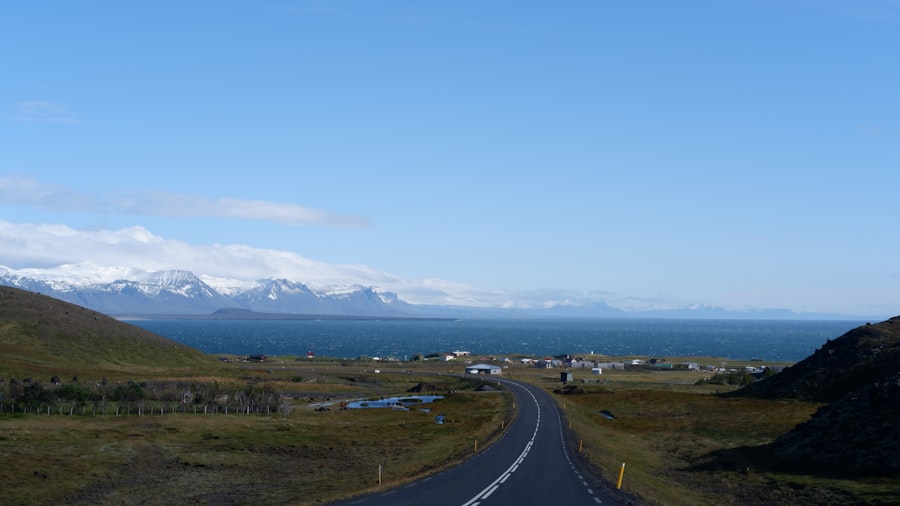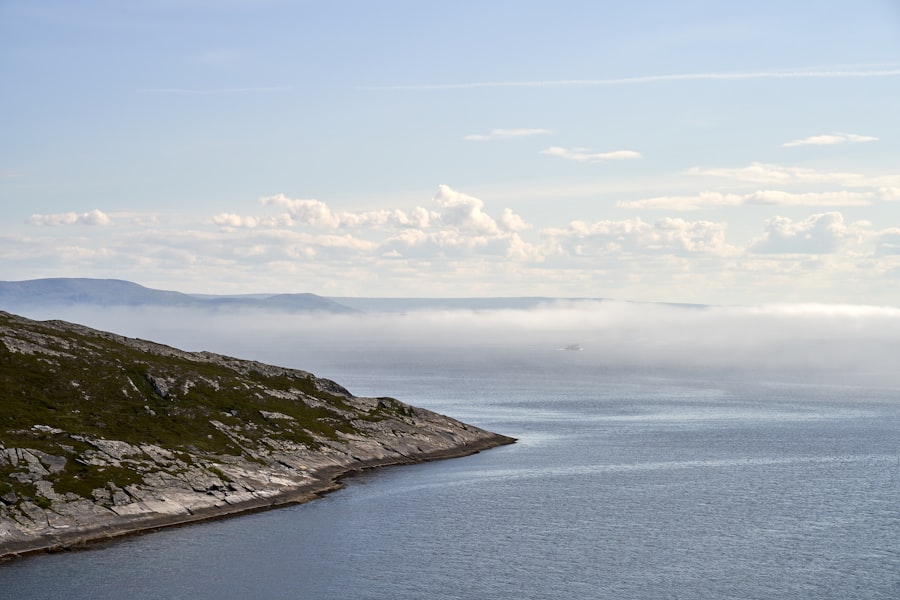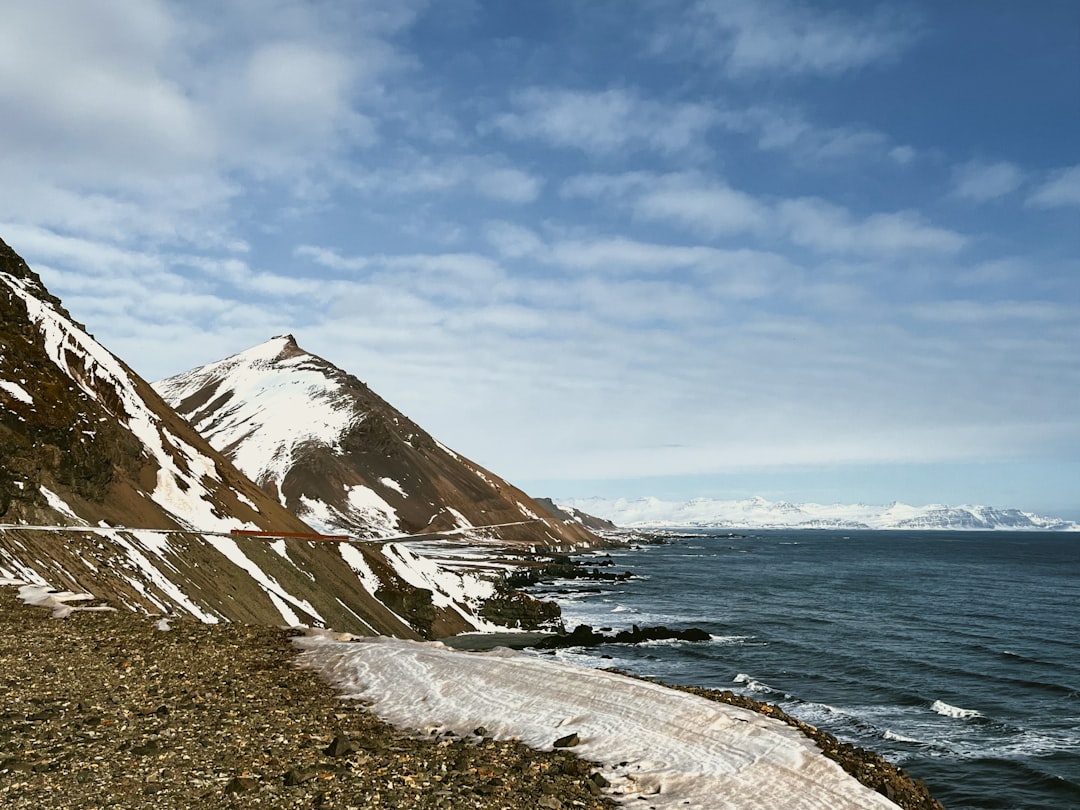The Northern Sea Route (NSR) is a maritime passage that runs along the northern coast of Russia, connecting the Atlantic and Pacific Oceans. This route, which has gained increasing attention in recent years, is characterized by its unique geographical features and the potential it holds for global shipping. The NSR offers a shorter alternative to traditional shipping lanes, significantly reducing travel time and fuel consumption for vessels navigating between Europe and Asia.
As climate change continues to impact Arctic ice coverage, the NSR is becoming more accessible, prompting a reevaluation of its role in international trade. The significance of the Northern Sea Route extends beyond mere logistics; it embodies a complex interplay of environmental, economic, and geopolitical factors. As nations grapple with the implications of a changing climate, the NSR stands at the forefront of discussions regarding Arctic navigation and resource exploitation.
The route’s potential to reshape global trade patterns has sparked interest from various stakeholders, including governments, shipping companies, and environmental organizations. Understanding the multifaceted nature of the NSR is essential for grasping its implications for the future of maritime navigation.
Key Takeaways
- The Northern Sea Route is a shipping route that stretches along the northern coast of Russia, connecting the Atlantic and Pacific Oceans.
- The historical significance of the Northern Sea Route dates back to the early 20th century, when it was used for exploration and trade by Russian and European navigators.
- The current state of the Northern Sea Route is experiencing increased traffic due to melting ice in the Arctic, making it more accessible for commercial shipping and resource extraction.
- Navigating the Northern Sea Route offers potential benefits such as reduced shipping distances, lower fuel consumption, and access to untapped natural resources.
- Challenges of navigating the Northern Sea Route include harsh weather conditions, ice hazards, limited infrastructure, and environmental concerns.
Historical significance of the Northern Sea Route
Historically, the Northern Sea Route has been a subject of fascination and exploration since the early days of Arctic navigation. The quest for a passage that would connect Europe to Asia without traversing the treacherous waters of the southern routes has captivated explorers for centuries. Notably, in the 16th century, Russian Tsar Ivan IV commissioned expeditions to discover a northern passage, marking the beginning of a long-standing interest in this Arctic corridor.
However, it was not until the 20th century that significant advancements in icebreaker technology made regular navigation through these icy waters feasible. The NSR’s historical significance is also tied to its role in Russian maritime strategy. During the Soviet era, the route was developed as a vital shipping lane for transporting goods and resources from Siberia to Europe.
The establishment of a network of ports and support infrastructure along the route underscored its importance to national interests. This historical context provides insight into contemporary discussions surrounding the NSR, as Russia continues to assert its sovereignty over these waters while promoting their use for international shipping.
Current state of the Northern Sea Route

In recent years, the Northern Sea Route has witnessed a notable increase in maritime traffic, driven by advancements in technology and changing climatic conditions.
According to reports from Russian authorities, shipping traffic along the NSR has surged, with a diverse array of vessels ranging from cargo ships to cruise liners taking advantage of this emerging route.
This uptick in activity reflects a growing recognition of the NSR’s potential as a viable alternative to traditional shipping lanes. Despite these developments, navigating the Northern Sea Route remains a complex endeavor. The region’s harsh weather conditions and unpredictable ice patterns pose significant challenges for mariners.
While icebreaker support has improved safety and accessibility, operators must still contend with the risks associated with navigating through icy waters. Furthermore, regulatory frameworks governing navigation in the NSR are still evolving, as Russia seeks to balance national interests with international cooperation. As such, understanding the current state of the NSR requires an appreciation of both its opportunities and challenges.
Potential benefits of navigating the Northern Sea Route
| Benefit | Description |
|---|---|
| Shorter distance | The Northern Sea Route offers a shorter distance between Europe and Asia compared to traditional routes through the Suez Canal. |
| Reduced transit time | Using the Northern Sea Route can lead to reduced transit time for shipping goods between the two continents. |
| Potential cost savings | Shorter distance and reduced transit time can result in potential cost savings for shipping companies. |
| Access to natural resources | The route provides access to natural resources in the Arctic region, which can be beneficial for resource extraction industries. |
The potential benefits of navigating the Northern Sea Route are manifold, particularly in terms of efficiency and cost savings for global shipping. By providing a shorter transit route between Europe and Asia, the NSR can significantly reduce travel times for vessels. For instance, shipping goods from Rotterdam to Shanghai via the NSR can cut transit times by up to 40% compared to traditional routes through the Suez Canal.
This reduction not only translates into lower fuel costs but also enhances supply chain efficiency, making it an attractive option for shipping companies looking to optimize their operations. Moreover, the NSR offers opportunities for resource extraction and development in the Arctic region. As melting ice reveals previously hidden reserves of oil, gas, and minerals, nations are increasingly interested in tapping into these resources.
The route serves as a critical artery for transporting these commodities to global markets, potentially boosting economic growth for countries bordering the Arctic. However, while these benefits are enticing, they must be weighed against environmental concerns and geopolitical tensions that may arise from increased activity in this sensitive region.
Challenges of navigating the Northern Sea Route
Despite its potential advantages, navigating the Northern Sea Route is fraught with challenges that must be addressed to ensure safe and efficient passage. One of the primary obstacles is the unpredictable nature of Arctic weather and ice conditions. While advancements in satellite technology and icebreaker capabilities have improved navigation safety, vessels still face risks associated with shifting ice floes and sudden storms.
Mariners must remain vigilant and adaptable to changing conditions, which can complicate planning and logistics. Additionally, regulatory challenges present another layer of complexity for those seeking to navigate the NSR. Russia maintains strict control over maritime activities in its territorial waters, requiring foreign vessels to adhere to specific regulations and obtain permits for passage.
This regulatory environment can create barriers for international shipping companies looking to utilize the route. Furthermore, concerns about environmental protection and indigenous rights add another dimension to discussions surrounding navigation in the Arctic. Balancing economic interests with ecological sustainability will be crucial as stakeholders navigate these challenges.
Strategic importance of the Northern Sea Route

The strategic importance of the Northern Sea Route cannot be overstated, particularly in light of shifting global trade dynamics and geopolitical tensions. As countries seek to enhance their influence in the Arctic region, control over key maritime routes like the NSR becomes increasingly significant. For Russia, asserting sovereignty over this passage aligns with its broader ambitions to establish itself as a dominant player in Arctic affairs.
The NSR serves not only as a vital shipping lane but also as a symbol of national pride and security. Moreover, the strategic implications of the NSR extend beyond regional boundaries. As global trade patterns evolve, nations are reevaluating their maritime strategies in response to changing economic realities.
The potential for increased traffic along the NSR could reshape traditional shipping routes and alter established trade relationships. This shift may prompt countries to invest in infrastructure and capabilities that enhance their competitiveness in Arctic navigation, further underscoring the route’s strategic significance on the world stage.
Economic opportunities along the Northern Sea Route
The economic opportunities presented by the Northern Sea Route are vast and varied, encompassing not only shipping but also resource extraction and tourism. As global demand for energy resources continues to rise, access to Arctic oil and gas reserves becomes increasingly attractive for nations seeking energy security. The NSR serves as a critical conduit for transporting these resources from remote extraction sites to international markets, potentially generating significant revenue for countries involved in Arctic development.
In addition to resource extraction, tourism along the NSR is emerging as a burgeoning industry. The allure of Arctic landscapes and unique wildlife draws travelers seeking adventure and exploration. Cruise lines are beginning to offer itineraries that include stops along the NSR, providing opportunities for local communities to benefit economically from increased visitor traffic.
However, while these economic prospects are promising, they must be pursued responsibly to mitigate potential environmental impacts and ensure sustainable development in this fragile region.
Environmental considerations of using the Northern Sea Route
Navigating the Northern Sea Route raises important environmental considerations that cannot be overlooked. The Arctic ecosystem is particularly vulnerable to disturbances caused by increased maritime activity, including oil spills, pollution from ships, and disruptions to wildlife habitats. As shipping traffic grows along the NSR, there is an urgent need for robust environmental protections to safeguard this delicate environment from potential harm.
Furthermore, climate change poses additional challenges for environmental management in the Arctic region. As temperatures rise and ice melts, ecosystems are undergoing rapid transformations that can have far-reaching consequences for both local communities and global climate patterns. Stakeholders must prioritize sustainable practices that minimize ecological footprints while promoting economic development along the NSR.
Collaborative efforts among nations will be essential in addressing these environmental challenges and ensuring that navigation through this pristine region is conducted responsibly.
Geopolitical implications of the Northern Sea Route
The geopolitical implications of the Northern Sea Route are profound, as nations vie for influence over this strategically significant corridor. As Arctic ice continues to recede due to climate change, new opportunities for navigation and resource extraction emerge, prompting heightened interest from both Arctic and non-Arctic states alike. Countries such as China have expressed ambitions to engage more actively in Arctic affairs, viewing the NSR as a potential shortcut for trade routes that could enhance their economic interests.
This growing interest has led to increased tensions among nations regarding territorial claims and resource rights in the Arctic region. Disputes over maritime boundaries and access to resources have prompted calls for clearer governance frameworks to manage these complex issues effectively. The geopolitical landscape surrounding the NSR is characterized by a delicate balance between cooperation and competition among nations seeking to assert their interests while navigating shared challenges.
International cooperation and governance of the Northern Sea Route
International cooperation is essential for effective governance of the Northern Sea Route as it becomes increasingly utilized by global shipping fleets.
Organizations such as the Arctic Council play a vital role in facilitating dialogue among member states on issues related to Arctic governance.
Efforts toward establishing comprehensive governance frameworks must address various aspects of navigation along the NSR, including safety standards, environmental protections, and indigenous rights. Engaging local communities in decision-making processes will be critical for ensuring that their voices are heard and their interests are represented in discussions surrounding Arctic development. By fostering international cooperation and inclusive governance structures, stakeholders can work together toward sustainable management of this vital maritime corridor.
Future prospects for navigating the Northern Sea Route
The future prospects for navigating the Northern Sea Route appear promising yet complex as various factors converge to shape its trajectory. With ongoing advancements in technology and infrastructure development aimed at enhancing navigational safety, it is likely that traffic along the NSR will continue to increase in coming years. However, this growth must be balanced against environmental considerations and geopolitical dynamics that could influence access to this vital route.
As nations grapple with climate change impacts and shifting trade patterns, strategic investments in Arctic infrastructure will be essential for maximizing opportunities presented by the NSR while minimizing risks associated with increased activity in this sensitive region. The interplay between economic interests, environmental stewardship, and geopolitical considerations will ultimately determine how effectively stakeholders navigate these challenges moving forward. In conclusion, while navigating the Northern Sea Route presents significant opportunities for global trade and economic development, it also poses complex challenges that require careful consideration and collaboration among nations.
As stakeholders work toward harnessing its potential responsibly, they must remain vigilant about protecting this fragile environment while fostering international cooperation that promotes sustainable practices in one of Earth’s most pristine regions.
The Northern Sea Route, a shipping lane along the Russian Arctic coast, is gaining attention due to its potential to significantly reduce travel time between Europe and Asia. This route is becoming increasingly viable as Arctic ice continues to recede, opening up new opportunities for international trade. For more insights into the implications of this development, you can explore a related article on the topic by visiting this page. This article delves into the geopolitical and environmental considerations surrounding the Northern Sea Route, providing a comprehensive overview of its future prospects.
WATCH NOW! Unlocking Disaster: 7 Choke Points That Could Fracture Our Connected World Overnight
FAQs
What is the Northern Sea Route?
The Northern Sea Route is a shipping route located in the Arctic region, which connects the Atlantic and Pacific Oceans along the northern coast of Russia.
How long is the Northern Sea Route?
The Northern Sea Route spans approximately 5,600 kilometers (3,500 miles) from the Kara Sea to the Bering Strait.
When is the Northern Sea Route navigable?
The Northern Sea Route is typically navigable from late June to early November, when the ice cover is at its lowest and allows for safe passage of ships.
What are the benefits of using the Northern Sea Route for shipping?
Using the Northern Sea Route can significantly reduce shipping distances and transit times between Europe and Asia, compared to traditional routes through the Suez Canal.
What are the challenges of navigating the Northern Sea Route?
Challenges of navigating the Northern Sea Route include harsh Arctic weather conditions, icebergs, and the need for specialized ice-class vessels to withstand the icy conditions.
Is the Northern Sea Route becoming more accessible due to climate change?
Climate change has led to a reduction in Arctic sea ice, making the Northern Sea Route more accessible for longer periods each year. However, the route still presents significant challenges and risks.
